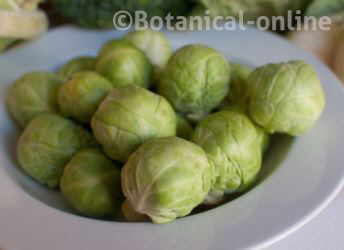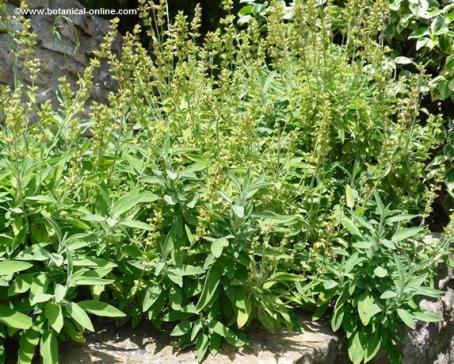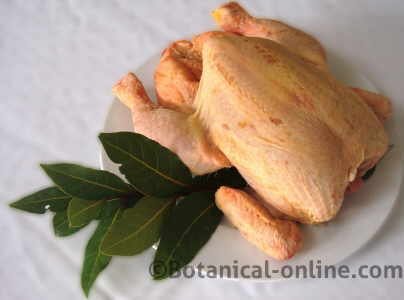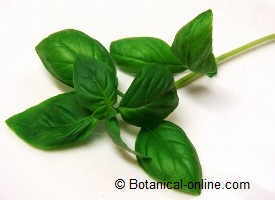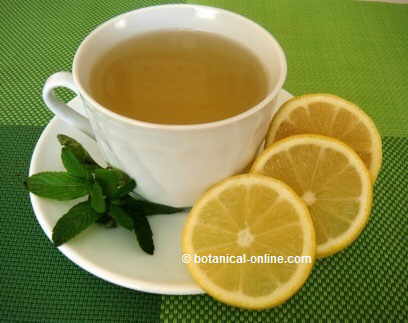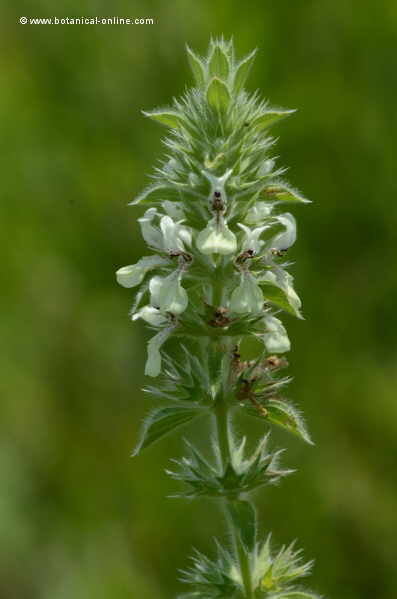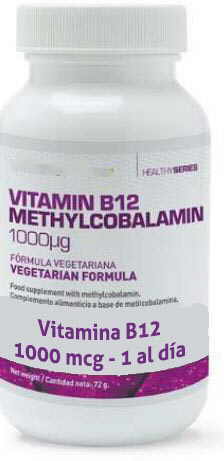Contents
- 1 Health benefits of glucosinolates
- 2 Medicinal properties of glucosinolates
- 2.1 Rubefacient effects of glucosinolates
- 2.2 Properties of glucosinolates against cancer
- 2.3 Cruciferous foods against cancer
- 2.4 Anticancer mechanism of cruciferous vegetables
- 2.5 Goitrogenic or anti-thyroid properties of glucosinolates
- 2.6 Effects of glucosinolates on animals
- 2.7 Which are the most important glucosinolates?
- 2.8 Sources of glucosinolates
Health benefits of glucosinolates
What are glusosinolates?
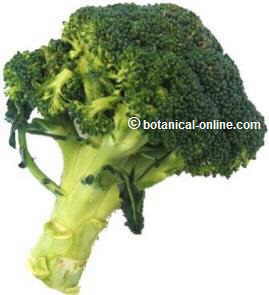
Glucosinolates, glycosylates or thioglycosides are components that are present in most plants of the cruciferous family (Brassicaceae ), which includes cabbage, arugula, cauliflower, purple cabbage, mustard, rapeseed, radishes or turnips.
Chemically, glucosinolates are organic compounds (glycosides) sulfur, responsible for the spicy and bitter taste characteristic of these plants.
In the plants, these components have the function of defense mechanism against the predators, because their smell drives away the insects.
There are 120 different types of glucosinolates known among the different cruciferous vegetables species, although only 4 of these substances are found in large quantities.
One of the most abundant glucosinolates in the diet and most studied is the sinigrin, present in broccoli, watercress, cabbage, mustard, or capers.
Other plants, such as moringa, possess 4-0-alpha-l-rhamnopyranosyloxy-benzyl glucosinolate
Why do the glucosinolates sting? How do they act?
Cabbage or broccoli do not have a spicy flavor when boiled, only if they are chewed raw. Mustard seeds are not hot if they are not crushed. This is due to the mechanism of action of glucosinolates, which is as follows:
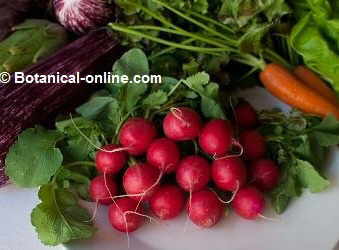
Plants that contain glucosinolates, such as mustard seeds, also contain other types of substances called enzymes. The enzymes are not in contact with the glucosinolates, but during chewing the cell membranes that separate them are broken and released, the two types of components (glucosinolates and enzymes) coming into contact with each other and producing the transformation reaction that will give rise to the glucosinolates.
When a plant with glucosinolates is chewed , enzymes degrade glucosinolates in genins, isothiocyanates, senevoles, thiocyanates or indoles (types of glucosinolates).
This transformation is carried out by specific enzymes, such as, for example, the enzyme myrosinase in mustard.
These substances are very aromatic and responsible for the characteristic hot and spicy flavor of mustard.
When the vegetables are cooked, the enzymes are destroyed and the medicinal components are not formed, boiled, steamed or fried. If the vegetables are boiled for a short time (blanching), they remain crispy and retain a certain amount of enzymes and glucosinolates.
What is the function of glucosinolates in nature?
These components have the function of driving away predators, such as caterpillars or other insects.
Health benefits of glucosinolates
In our body, isothiocyanates and indoles protect us against many types of cancer.
Glucosinolates are used in phytotherapy for their rubefacient properties, mainly via topical cataplasms. They produce an irritation of the skin, which in turn causes a greater irrigation of the affected area. This is used, for example, in mustard pedicures against migraines.
They also have antithyroid or goitrogenic properties and should avoid these substances people with hypothyroidism or Hashimoto’s thyroiditis.
Medicinal properties of glucosinolates
Rubefacient effects of glucosinolates
Glucosinolates have rubefaciente properties, that is to say, they are substances with revulsive effect that applied externally produce an irritation of the skin, which in turn causes a greater irrigation of the affected area.
The intake of foods rich in these substances can cause irritation of the mucous membranes of the digestive tract. For this reason, people with heartburn, dyspepsia or digestive ulcers should avoid rubefactory condiments such as mustard.
Properties of glucosinolates against cancer
One of the most widespread properties of glucosinolates is their role against cancer (anti-carcinogenic properties), especially with the prevention of cancer. For this you should consume these vegetables regularly in the diet, for example, between 2 and 4 times a week.
The protective role of these vegetables against cancer is due to its glucosinolate content, but other anti-cancer components such as fiber, folic acid, vitamin C and other flavonoids are also likely to be involved.
Cruciferous foods against cancer
Vegetables of the cruciferous family protect us against cancer. Among these kind of food we have : radishes, cauliflower, broccoli, Brussels sprouts, cabbage or turnips
Anticancer mechanism of cruciferous vegetables
It is scientifically proven that a diet rich in cruciferous plants, such as cabbage, watercress or arugula, has a protective effect against different types of cancer, such as cancer of the breast, lung, colon, rectum and prostate.
Indoles are involved in the regulation of estrogens, also helping in this way to prevent breast cancer.
For example, broccoli glucosinolates (glucoraphanin and glucobrassicin) are broken down into sulforaphane and into indole-3-carbinol (abbreviated as I3C), protective against breast, lung and colon cancer.
Due to the anticancer potential of these foods, cruciferous vegetables have a fundamental role in all types of cancer diets. It should be remembered that in order to obtain their properties, you should consume them undercooked, raw or preserved vegetables (cabbage chukrut or other vegetables), because cooking them destroys anticancer compounds and other vitamins such as vitamin C.
Goitrogenic or anti-thyroid properties of glucosinolates
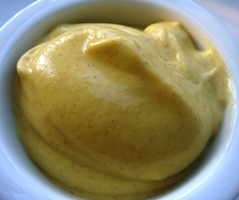
Glucosinolates can have an anti-thyroid effect, interfere with the synthesis of thyroid hormones or inhibit the re-uptake of iodine by the thyroid gland. Although it has been shown that the intake of these foods does not produce alterations in the thyroid gland, people with hypothyroidism should control the intake of cruciferous vegetables.
Special attention should be paid to women in breastfeeding, since these goitrogenic components pass into breast milk and can be ingested by the baby. Cruciferous vegetables should not be completely eliminated at this stage, although it is recommended to reduce foods rich in these substances such as mustard.
Effects of glucosinolates on animals
The glycosides present in cruciferous plants are capable of decreasing the growth of cattle and reducing the milk production of these animals. Gobiogenic symptoms are manifested with pale mucous membranes, growth retardation, reduced milk production (or eggs) and hair loss.
Brassicaceous plants also produce photosensitivity in veterinary medicine. These compounds pass their strong flavor to milk, so it affects their organoleptic properties.
Which are the most important glucosinolates?
Among them, the most important ones are:
- Sinigrin: found in mustard seeds, reacts with myrosines resulting in allyl isothiocyanate (AITC).
- Sulforaphane isothiocyanate: protects against liver cancer and helps eliminate harmful products from the body.
- Phenethyl isothiocyanate or phenylethyl isothiocyanate (FITC): involved in the treatment of leukemia.
- Indol-3-carbinol (I3C): it is believed that its properties are due to the components resulting from its degradation. These products cause the natural death of cancer cells (apoptosis).
Sources of glucosinolates
- All plants of the cruciferous or brassica family, including the genera Brassicaceae, Capparidaceae and Caricaceae.
- Garden nasturtium (Tropaeolum majus), family plant of the Tropaeolaceae. It contains the glucosinolate glycotropalloside.
- Rough cocklebur (Xanthium strumarium), plant of the Compound family. It contains the glucosinolate: carboxy atractyloside
Each time more plants are discovered that contain some of these principles (capers, ..), although without a doubt the most abundant sources are those mentioned above.
![]() More information on glucosinolates
More information on glucosinolates
10 February, 2025

